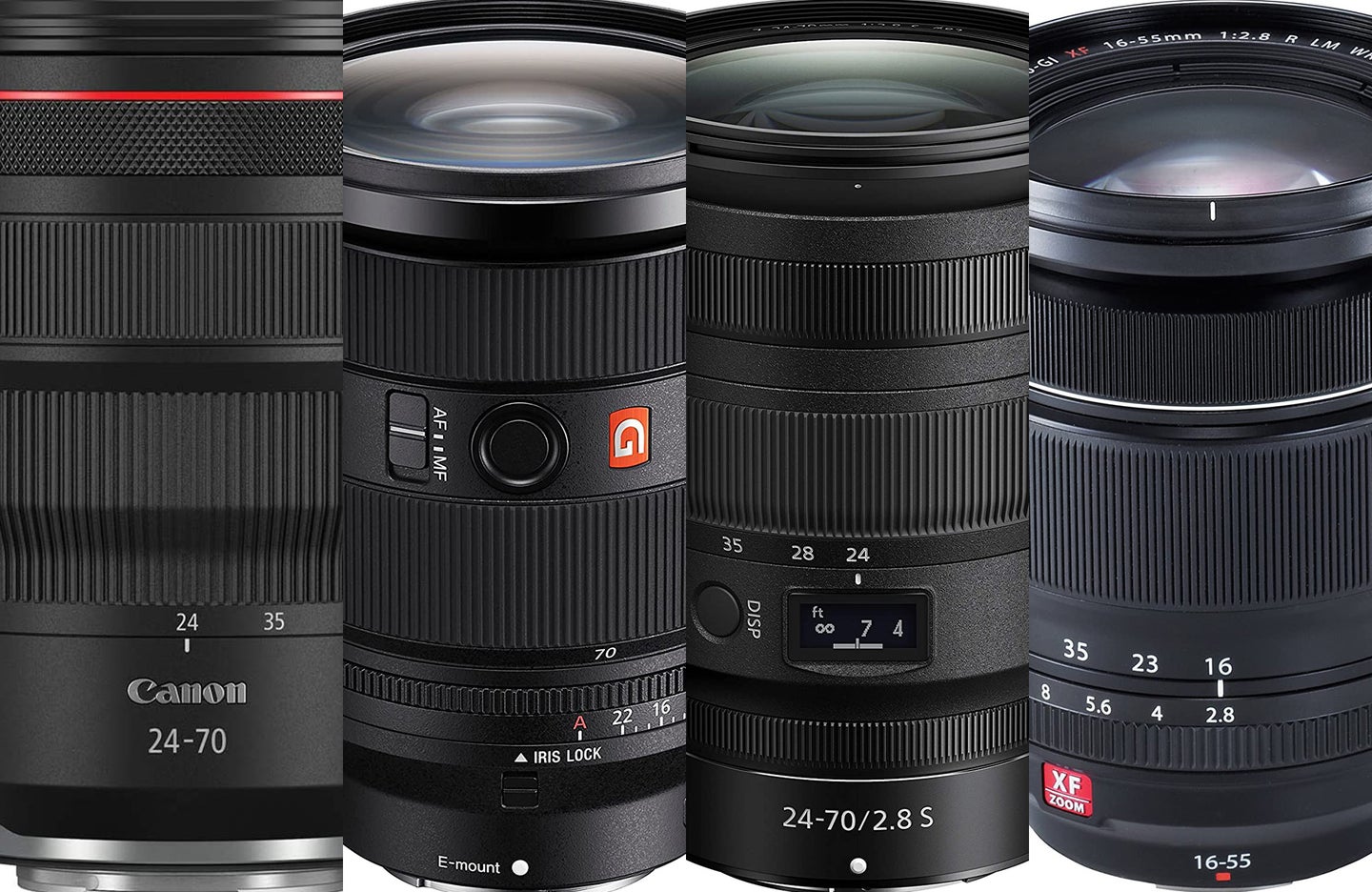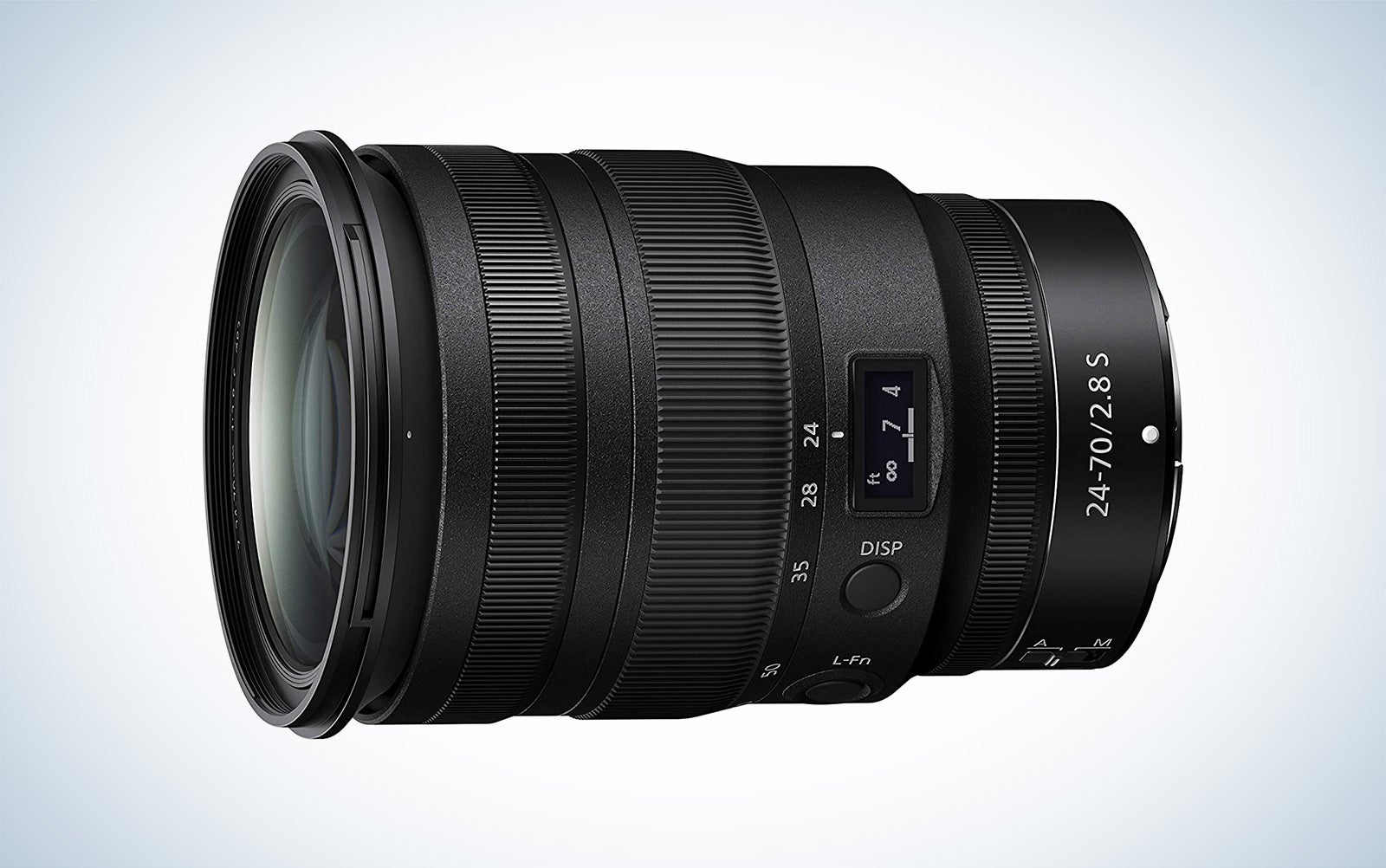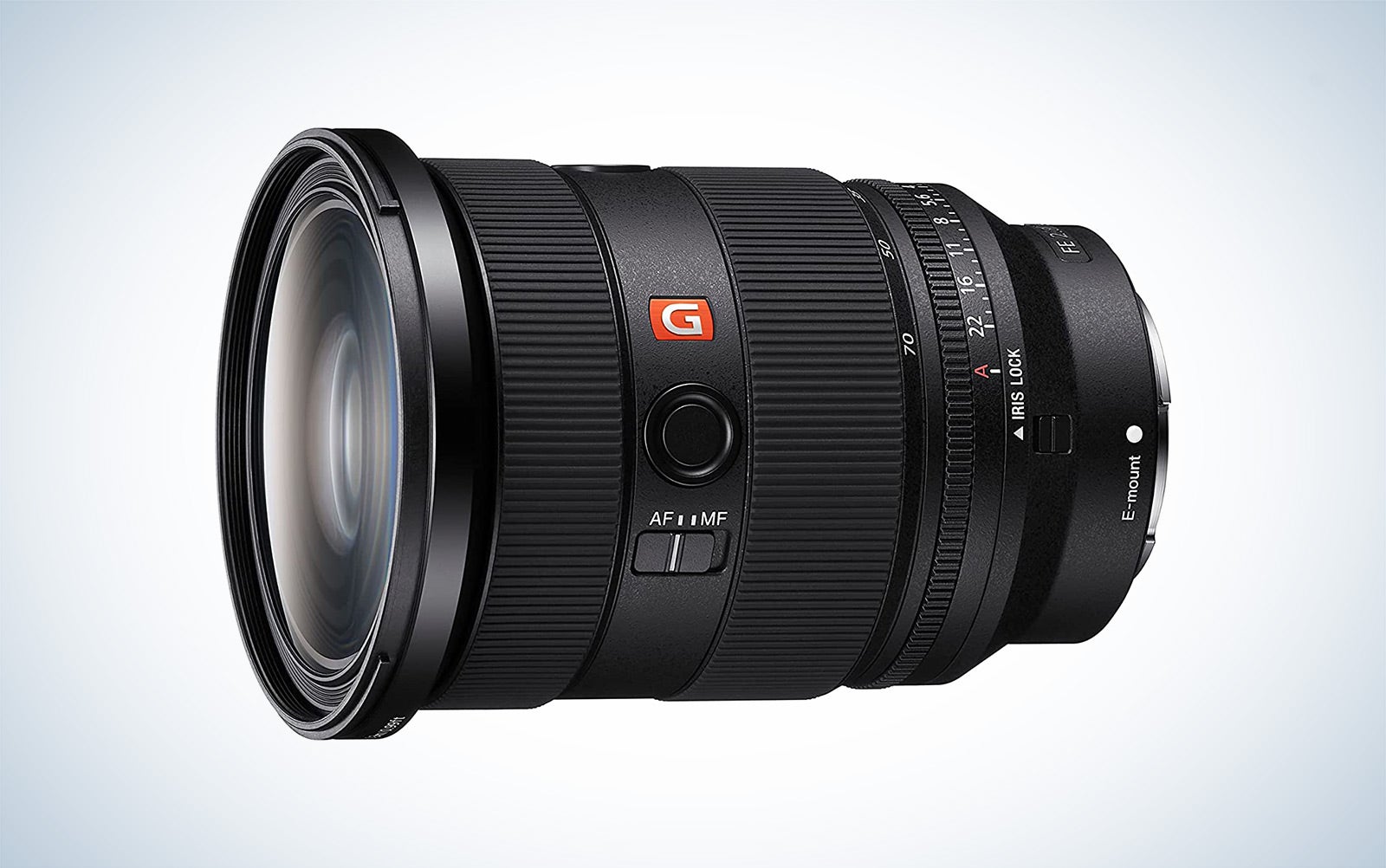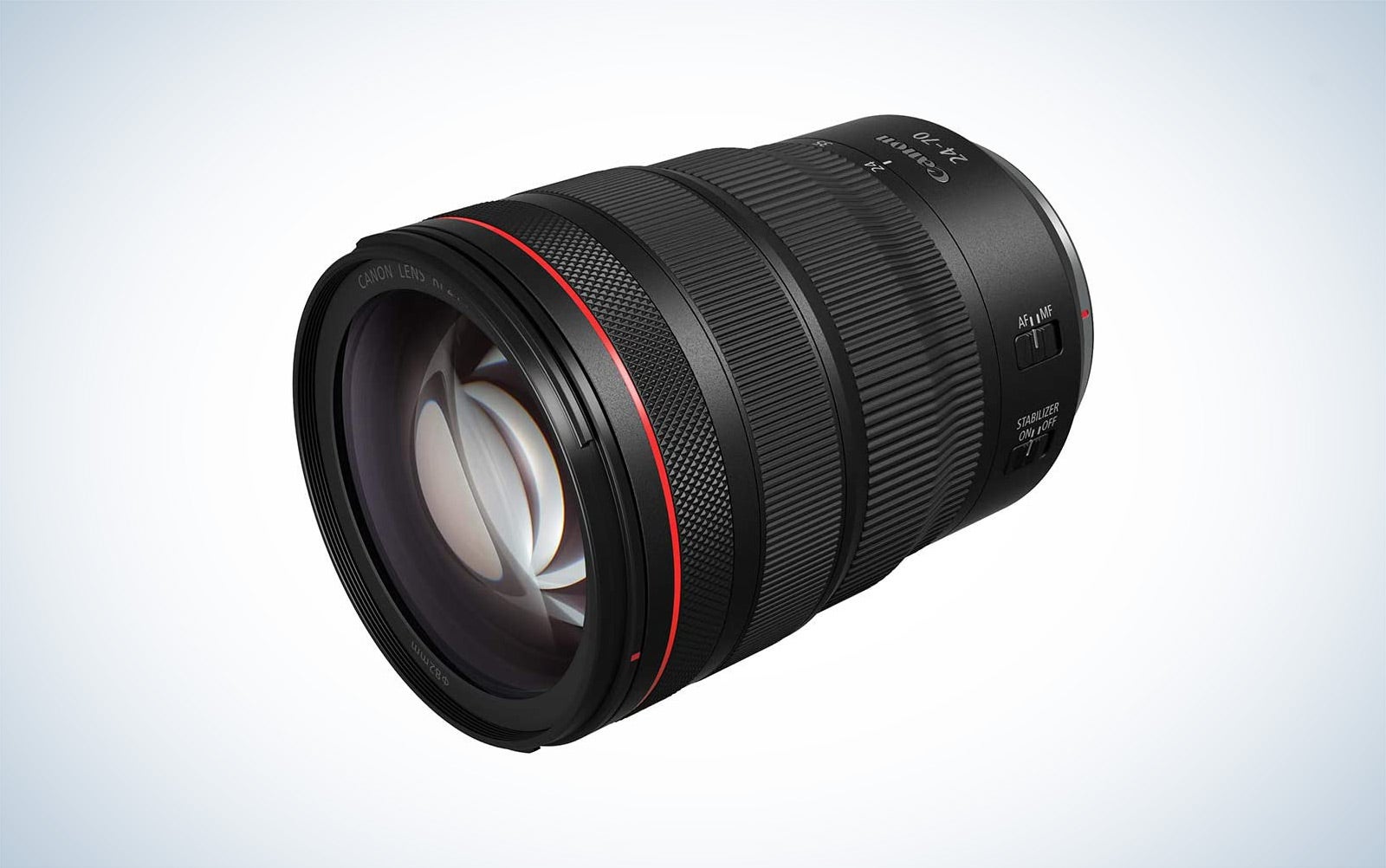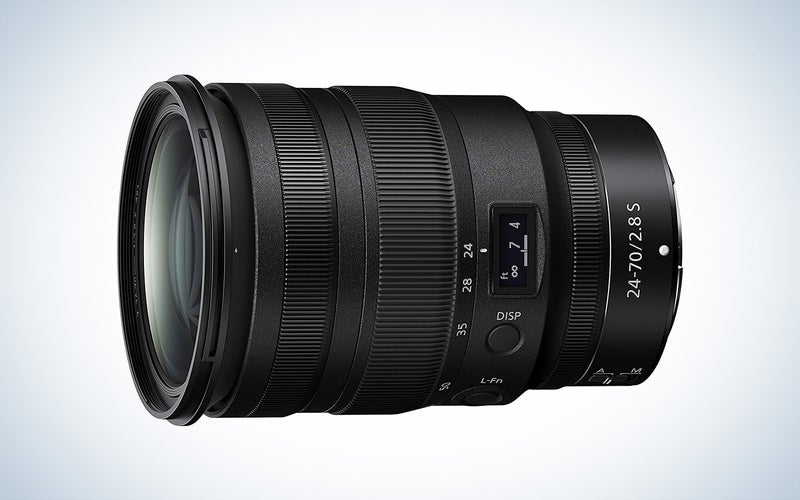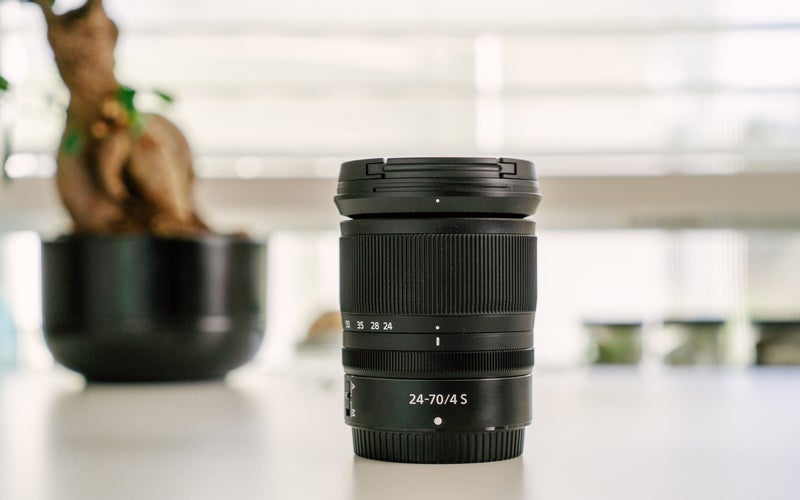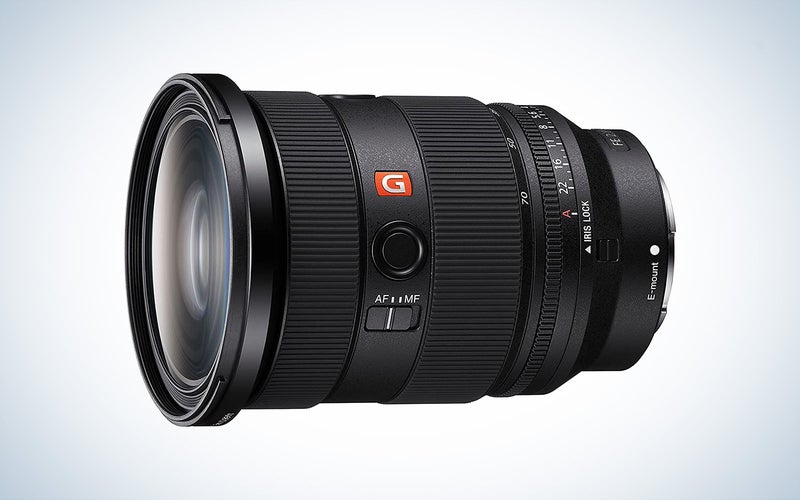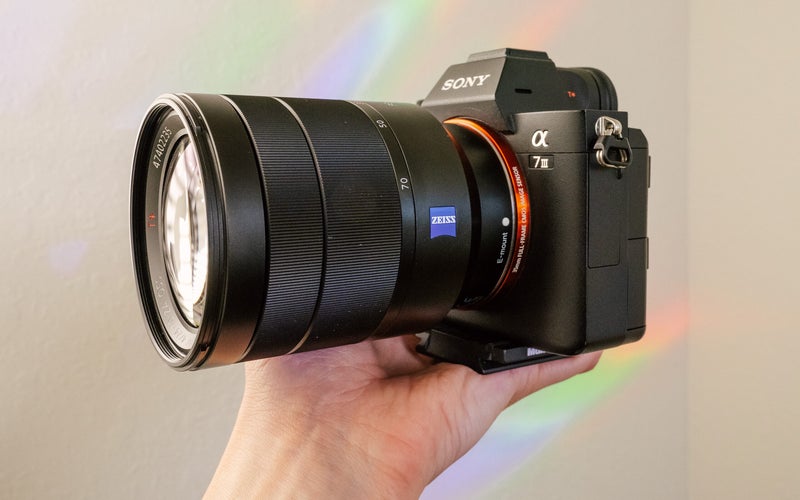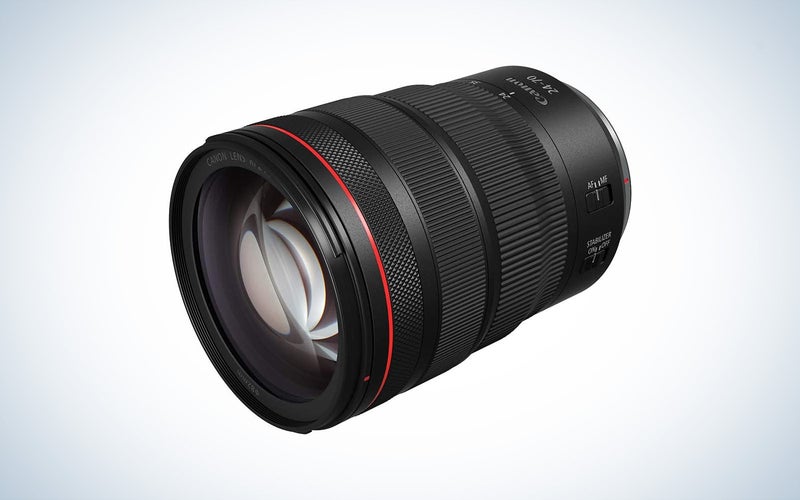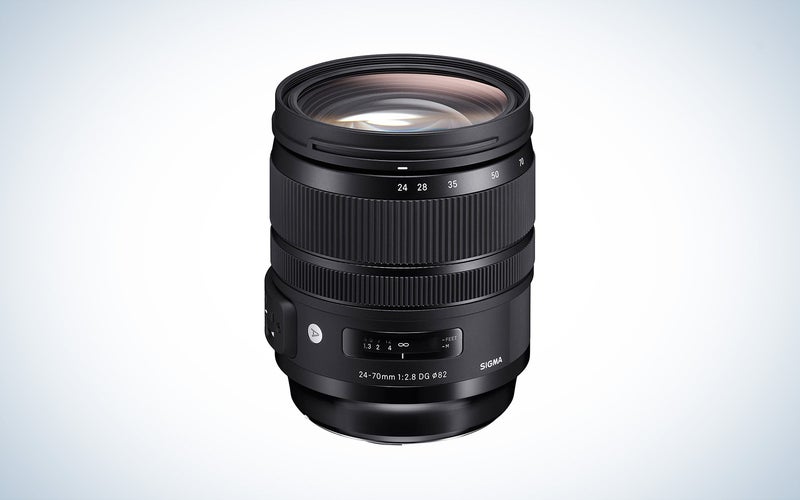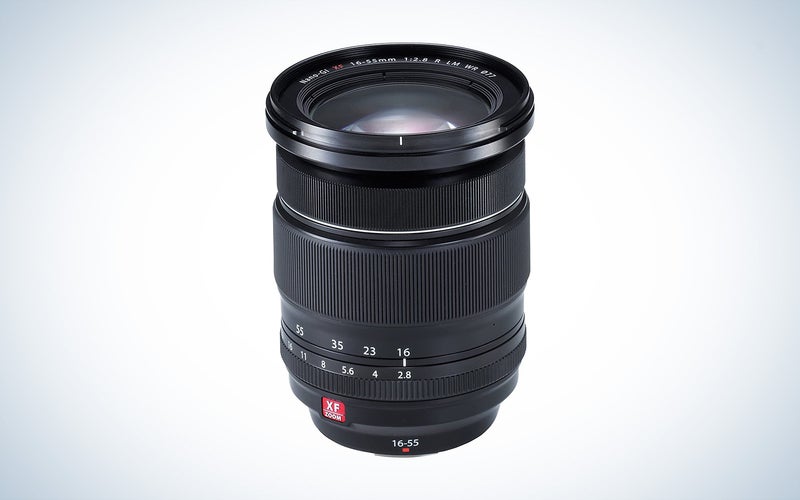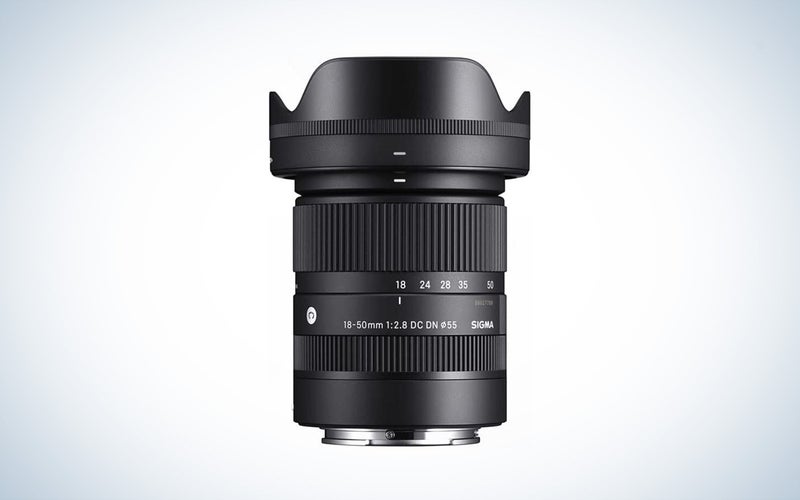We may earn revenue from the products available on this page and participate in affiliate programs. Learn more ›
Photographers often refer to the 24-70mm lens as “the moneymaker.” That’s because these standard zooms are possibly the most versatile lenses available. They offer a bit of everything, from wide-angle to telephoto, in one body, meaning you can change lenses less frequently. The 24-70mm range makes them ideal for just about anything, including weddings, portraits, travel, and even landscapes. It’s truly a do-it-all lens. And because they don’t offer a massive range of focal lengths, they are generally reasonable in size, making them easier to carry around. So no matter what you like to shoot, the best 24-70mm lenses can help you create stunning images.
- Best Nikon: NIKKOR Z 24-70mm f/2.8 S
- Best budget Nikon: NIKKOR Z 24-70mm f/4 S
- Best Sony: Sony FE 24-70mm f/2.8 GM II
- Best budget Sony: Sony Vario-Tessar T* FE 24-70mm f/4
- Best Canon: Canon RF 24-70mm f/2.8 L IS USM
- Best budget Canon: Sigma 24-70mm f/2.8 DG OS HSM Art
- Best Fujifilm: Fujinon XF16-55mm f/2.8 R LM WR
- Best budget Fujifilm: Sigma 18-50mm f/2.8 DC DN Contemporary
How we picked the best 24-70mm lenses
The writers and editors at PopPhoto have decades of photography experience across just about every genre. We have also worked with products from every major camera brand, including many of the 24-70mm lenses included here. When selecting the best 24-70mm lenses, we prioritized image quality, as that is the most important aspect of any lens. To assess quality, we looked at each lens’ sharpness, aberrations, fringing, distortion, and vignetting. We also considered aperture range, build quality, size, weight, and any additional features a lens may have.
The best 24-70mm lenses: Reviews & recommendations
Every brand has at least one 24-70mm available, with some offering multiple lenses at different price points. So no matter what camera system you use, there is a 24-70mm zoom lens out there for you.
Best Nikon: NIKKOR Z 24-70mm f/2.8 S
Nikon
Why it made the cut: Nikon’s pro-grade standard lens offers excellent sharpness across the zoom range even when wide open with minimal and easy-to-manage distortion.
Specs
- Lens mount: Z-mount, full-frame
- Aperture range: f/2.8 – f/22
- Image stabilization: No
- Filter size: 82mm
- Minimum focus distance: 1.25 feet
- Weight: 1.8 pounds
- Dimensions: 3.5 x 4.96 – 6.15 inches
Pros
- Extremely sharp
- Good weather-sealing
- Convenient OLED display
- Includes three control rings
Cons
- Autofocus isn’t as fast as other options
- Pricey
The NIKKOR 24-70mm f/2.8 is one of the best standard zooms across brands. It is extremely sharp, especially when paired with a high-resolution camera like the Z9. And the sharpness holds across the entire image and zoom range, with just a tiny bit of softness in the corners when wide open. While there is some visible distortion—barrel distortion when zoomed out and pincushion at 70mm—it is easily corrected with the associated lens profile in raw processing programs.
Nikon built this lens to be rugged and durable, and it is moisture- and dust-resistant. It also features a unique OLED display on the top of the lens so you can quickly see info like your exact focal length, focus distance, and depth of field figures. The built-in control rings manipulate manual focus and zoom and a third that can be customized to control aperture, ISO, or other settings you may want quick access to.
The one thing that holds this back slightly is that its autofocus isn’t quite as fast as other 24-70mm lenses. It is still plenty fast for most situations, but if you are a serious sports or action photographer, you may want to consider something else. Luckily, the autofocus is highly accurate, so you can trust that you will nail focus more frequently.
Best budget Nikon: NIKKOR Z 24-70mm f/4 S
Abby Ferguson
Why it made the cut: This f/4 version of Nikon’s 24-70mm offers a lot of value thanks to its sub $1,000 price, excellent sharpness, and compact but durable build.
Specs
- Lens mount: Z-mount, full-frame
- Aperture range: f/4 – f/22
- Image stabilization: No
- Filter size: 72mm
- Minimum focus distance: 11.81 inches
- Weight: 1.1 pounds
- Dimensions: 3.05 x 3.48 – 5.44 inches
Pros
- Relatively compact and lightweight
- Affordable
- Very well built
- Silent autofocus
Cons
- Some may not like the retractable design
- Control ring is really sensitive
The NIKKOR 24-70mm f/4 comes at a much more budget-friendly price than the f/2.8 version without too many compromises. You, of course, lose a stop of speed. But it’s still capable of beautiful bokeh and very shallow depth of field, even at f/4. And despite the lower price, it still is extremely sharp. It allows you to take full advantage of the 45.7-megapixel resolution of the Z7 II or Z9 cameras. It’s worth pointing out that the lens runs just shy of $1,000 (at the time of writing) on its own, but if you buy it as a kit with the Z7 II, it will effectively cost you $600, which is an absolute steal for this lens.
This full-frame lens is dust- and moisture-resistant and built with high-quality plastic to reduce weight while maintaining durability. In addition, it features a retractable design so that it is more compact when you aren’t using it. That saves you about three-quarters of an inch, but some may not like having to extend the lens to start shooting. I haven’t used too many lenses with this design and have admittedly lifted the camera up to take photos without extending it far too many times. In cases of action, that means missing the shot, unfortunately.
Though the controls on the lens body are minimal, there is a tactile AF-to-manual focus switch, which we love to see. A programmable control ring allows for manual focus by default. However, I like to switch to ISO for faster exposure control. It is a highly sensitive ring, so it’s easy to overshoot your desired setting, but it is easy to get used to.
Best Sony: Sony FE 24-70mm f/2.8 GM II
Sony
Why it made the cut: This G Master standard zoom offers exceptional image quality, a rugged build, and a relatively lightweight design.
Specs
- Lens mount: E-mount, full-frame
- Aperture range: f/2.8 – f/22
- Image stabilization: No
- Filter size: 82mm
- Minimum focus distance: 8.3 inches
- Weight: 1.5 pounds
- Dimensions: 3.5 x 4.7 – 6 inches
Pros
- Extremely sharp
- Rugged build quality
- Fast autofocus
- Stunning bokeh
Cons
- Expensive
There are lots of reasons this is one of our favorite Sony lenses. For starters, the second version of Sony’s impressive 24-70mm f/2.5 G Master lens is 20 percent lighter than its predecessor, coming in at just 1.5 pounds. That makes it the lightest high-end 24-70mm across any brand. It’s also 18 percent shorter than the first version, making it easier to pack or carry on a long day of shooting.
As we have come to expect from G Master lenses, this 24-70mm offers rugged, weather-sealed build quality for durability. It’s also extremely sharp, even when wide open. And the sharpness is consistent across the zoom range, which isn’t typical in a zoom lens. So no matter what focal length or aperture you are using, you can trust that you will get crisp results, especially if you use a high-resolution camera such as the a7R V.
The 11-blade diaphragm results in incredibly smooth bokeh. It offers a minimum focusing distance of 8.3 inches, so while it isn’t a true macro lens, it will allow for some up-close detail shots. Thanks to all these features, this 24-70mm lens lends itself particularly well to wedding photography. It can easily go from ring shots to bridal portraits to the reception dance floor, saving you from switching lenses or juggling multiple bodies.
If you want a G Master lens but would like to save a little money, the first version of this lens is still an excellent choice, albeit with some added bulk and a slight reduction in overall quality.
Best budget Sony: Sony Vario-Tessar T* FE 24-70mm f/4
Abby Ferguson
Why it made the cut: This Zeiss branded lens comes in a relatively compact and lightweight package yet features a durable metal body with image stabilization. And it’s available at a very reasonable price.
Specs
- Lens mount: E-mount, full-frame
- Aperture range: f/4 – f/22
- Image stabilization: Yes
- Filter size: 67mm
- Minimum focus distance: 1.3 feet
- Weight: 15.03 ounces
- Dimensions: 2.87 x 3.72 – 4.9 inches
Pros
- Lightweight and compact
- Offers image stabilization
- Durable build
- Affordable
Cons
- Lacks sharpness at either end of the zoom range
Sony users have no shortage of options for 24-70mm lenses. Beyond Sony’s own lenses, you can also find ones made by Sigma, Rokinon, and Rokinon. This Zeiss version is the most affordable of all the choices but still has a lot going for it. Most notable is the size of the lens. It weighs less than a pound and, when zoomed out, is only 3.72 inches long. It doesn’t take up much space in a camera bag and is easy to carry around, even for a full day of shooting.
Unfortunately, the lens doesn’t offer the high-resolution results that we typically see from Zeiss lenses. It lacks some sharpness both all the way zoomed out and in, especially when wide open. But, if you stop down the aperture, the sharpness improves. And the middle focal lengths are even better.
This version offers a slightly slower f/4 aperture, but the lens provides image stabilization, which will help when using slower shutter speeds. And it’s still capable of excellent background blur and attractive bokeh, thanks to the rounded seven-blade aperture. The body is built with a rugged design, including weather seals. I’ve not been gentle with this lens, and it is no worse for the wear. It’s a great beginner Sony lens, especially for those wanting to try their hand at portraiture.
Best Canon: Canon RF 24-70mm f/2.8 L IS USM
Canon
Why it made the cut: With excellent image quality, a rugged, weather-sealed build, and five stops of image stabilization, Canon’s 24-70mm f/2.8 is a true pro-level lens.
Specs
- Lens mount: RF-mount, full-frame
- Aperture range: f/2.8 – f/22
- Image stabilization: Yes
- Filter size: 82mm
- Minimum focus distance: 8.27 inches
- Weight: 1.98 pounds
- Dimensions: 3.48 x 4.95 – 6.06 inches
Pros
- Five stops of stabilization
- Weather-sealed with fluorine coating
- Fast and quiet autofocus
- Plenty of controls on the lens body
Cons
- Fairly heavy
- Expensive
If you are looking for a 24-70mm for your Canon mirrorless camera, this is the only real option (besides the even pricier RF 28-70mm f/2 L USM). Luckily, it’s also a fantastic option. Canon clearly built this lens to be used and abused. It is weather-sealed with fluorine coatings on the front and rear elements to protect the lens. At just shy of two pounds, it’s on the heavier side, but the body is robust, so you don’t have to baby it.
One of the main features that makes this lens stand out over several of the other options on this list is the inclusion of image stabilization. It offers five stops of stabilization, allowing you to use slower shutter speeds and still get sharp results. The fixed f/2.8 maximum aperture also helps in low-light conditions.
Though it’s no macro lens, it can focus as close as 8.27 inches with a 1:3 macro ratio. And it’s a sharp lens, especially when paired with a high-resolution camera. Unfortunately, the control ring can’t be de-clicked unless you send it to Canon for a $79.99 service. That’s pretty unfortunate for videographers. But that control ring is programmable, so you can set it to whatever makes the most sense for your style.
Best budget Canon: Sigma 24-70mm f/2.8 DG OS HSM Art
Sigma
Why it made the cut: This EF-mount lens can be used on R-mount cameras with an adapter. It offers a lot of quality and a rugged build at an affordable price.
Specs
- Lens mount: EF-mount, full-frame
- Aperture range: f/2.8 – f/22
- Image stabilization: Yes
- Filter size: 82mm
- Minimum focus distance: 1.21 feet
- Weight: 2.24 pounds
- Dimensions: 3.46 x 4.24 – 5.45 inches
Pros
- Offers image stabilization
- Durable and rugged build
- Affordable
- Excellent image quality
Cons
- Heavy
- Requires an adapter
Unfortunately, Canon does not currently offer a budget 24-70mm, and there are no third-party versions for its R-mount cameras yet. So, this Sigma lens for EF-mount with an adapter is the next best thing if you are looking for a more affordable 24-70mm lens for your mirrorless Canon camera. You’ll have to purchase an adapter separately, but it will still save you about $1,000 if you opt for the cheaper adapter that lacks a control ring.
Weighing in at 2.24 pounds, Sigma’s EF-mount 24-70mm is a heavy lens—the heaviest on our list. But with that comes excellent build quality with weather seals to keep out dust and water and a fluorine coating to keep the front element clean. It also offers image stabilization of up to four stops.
The lens utilizes an Integrated HSM (Hyper Sonic Motor) for quick and quiet autofocus. And it offers full-time manual focus should you need to fine-tune your focus at a moment’s notice. As this is part of Sigma’s higher-end Art line, image quality is excellent, resulting in sharp, highly detailed photos. And the rounded nine-blade diaphragm results in attractive bokeh. Overall, it’s a quality lens at a much more affordable price. But if you’d like to save a smidge more ($100 at the time of writing), the Tamron SP 24-70mm f/2.8 Di VC USD G2 for Canon EF is also a fantastic budget-friendly choice.
Best Fujifilm: Fujinon XF16-55mm f/2.8 R LM WR
Fujifilm
Why it made the cut: This Fujinon lens offers a 24-84mm equivalent view, providing a bit more reach than a traditional 24-70mm lens. It’s a terrific portrait tool thanks to its added reach and f/2.8 aperture.
Specs
- Lens mount: X-mount, APS-C
- Aperture range: f/2.8 – f/22
- Image stabilization: No
- Filter size: 77mm
- Minimum focus distance: 11.8 inches
- Weight: 1.44 pounds
- Dimensions: 3.28 x 4.17 – 5.08 inches
Pros
- Extremely sharp
- Durable, weather-protected build
- Fast and accurate autofocus
Cons
- Relatively heavy and large
- No fluorine coating
You may be saying to yourself, “This isn’t a 24-70mm!” But, because Fujifilm cameras all utilize APS-C sensors with a 1.5x crop factor, a wider lens is needed to get a 24-70mm angle of view. In this case, the 16-55mm provides the full-frame equivalent of a 24-84mm lens. The bonus here is that you get a little bit of extra reach compared to traditional 24-70mm lenses, making it even more versatile.
Fujinon’s 16-55mm offers a bright and fast f/2.8 aperture. It also contains a rounded nine-blade diaphragm for attractive bokeh. That, combined with the 84mm focal length, makes this a fantastic portrait tool. And it utilizes twin linear motors for fast, silent, and accurate autofocus.
Unfortunately, at 1.4 pounds, it is a pretty heavy lens, especially considering the compact and lightweight X-mount cameras. But it is a seriously sharp lens with fantastic image quality. And, like all Fujifilm gear, the lens features plenty of weather sealing to protect it from dust and moisture, and it will work in temperatures as cold as 14°F. If you want excellent quality in a rugged body for your Fujifilm camera, this zoom lens is the way to go.
Best budget Fujifilm: Sigma 18-50mm f/2.8 DC DN Contemporary for Fujifilm X
Sigma
Why it made the cut: Sigma’s standard zoom for APS-C cameras is incredibly tiny—weighing just 10 ounces and 3 inches long—but still offers an f/2.8 maximum aperture and good image quality.
Specs
- Lens mount: X-mount, APS-C
- Aperture range: f/2.8 – f/22
- Image stabilization: No
- Filter size: 55mm
- Minimum focus distance: 4.8 inches
- Weight: 10.1 ounces
- Dimensions: 2.4 x 3 inches
Pros
- Very compact and lightweight
- Close focusing capabilities
- Constant f/2.8 maximum aperture
- Rugged build quality
Cons
- No physical aperture ring
The most noteworthy thing about Sigma’s 18-50mm lens for Fujifilm X-mount is just how tiny it is. It weighs only 10 ounces and is only 3 inches long. That suits Fujifilm’s small cameras—such as the X-T4—perfectly and also makes this a fantastic travel lens. It offers a 27-75mm equivalent focal length, so you get a little bit more reach on the long end.
Usually, small lenses have to compromise and utilize a smaller maximum aperture. But here, that’s not the case. Sigma managed to provide a fast f/2.8 aperture, making this lens useful in low-light situations. While its bokeh isn’t as good as a pro-quality lens, it is still quite good. And the lens is also very sharp, resulting in nicely detailed images.
The minimum focusing distance is also shockingly small at only 4.8 inches when zoomed out. That’s closer than is even practical in most situations (you’re likely to cast a shadow from your lens that close), but it provides a 0.36x maximum magnification. It’s a well-rounded lens, suitable for travel, portraits, detail images, and more, and yet is tiny and affordable at the same time.
Even more 24-70mm lenses
Canon RF 28-70mm f/2 L USM
Since this lens misses 4mm of focal length to be a 24-70mm it couldn’t quite make our list above. But we also couldn’t leave it out entirely. It’s a big, heavy, expensive lens, but it offers the fastest aperture of any zoom lens in this focal range. That makes it even better for low-light shooting or for getting out-of-focus backgrounds and beautiful bokeh. It’s also really sharp, with hardly any fringing or aberration, resulting in clean, high-resolution images.
Things to consider before buying a 24-70mm lens
The first step in selecting any lens, including a 24-70mm, is knowing which camera system and lens mount you need. Every major camera system makes a 24-70mm (or an equivalent lens for APS-C systems), so there is no need to switch brands in order to get a standard zoom.
Some camera manufacturers have multiple lens mounts, so it is important to verify that the lens you are considering will work with that mount. For example, Nikon DSLR cameras use the F-mount, while its new mirrorless system utilizes the Z-mount. You cannot use Nikon F-mount lenses on Z-mount cameras without purchasing an adapter. Likewise, third-party lens makers like Tamron and Sigma often make the same lens for multiple lens mounts, so it’s important to verify which one you need and that you are purchasing the correct one. Nothing is worse than getting your new lens only to realize it won’t work on your camera.
Aperture
When shopping for a 24-70mm lens, you’ll notice that there are different maximum apertures across the lens options. While most offer f/2.8 (or even f/2 in the case of the Canon lens), some of the more affordable options only go to f/4. Which is best really depends on your priorities and what you will be shooting, and of course, your budget. Because you get a full stop of extra light with an f/2.8 aperture over f/4, those lenses will be better for shooting in low-light conditions, such as nighttime or indoors. Wedding photographers, in particular, will benefit from that extra stop. The wider aperture will also allow you to blur the background slightly more, giving you better bokeh.
But an f/4 aperture is plenty for most situations. That’s especially true if the lens provides stabilization or your camera offers in-body image stabilization (IBIS). And you can still nicely blur the background with an f/4 aperture. So if your budget is a bit tight, don’t let the f/4 aperture scare you away.
Image stabilization
Certain lenses will offer image stabilization, which helps reduce blur that’s caused by camera shake. Stabilization is extremely helpful when shooting in low-light situations, as it allows you to use a slower shutter speed without needing a tripod. It’s also handy when using telephoto lenses, which exaggerate any camera shake.
To make things nice and confusing, different brands have different names for the same thing. For example, Nikon calls its image stabilization system Vibration Reduction (VR), while Sony refers to it as Optical SteadyShot (OSS). Some cameras also offer in-body image stabilization (IBIS), which is useful if your lens doesn’t provide any. Whether you need image stabilization or not depends in part on what you are shooting—and if a tripod is feasible—as well as if your camera uses IBIS. For some, it’s an essential feature that they don’t want to do without, whereas others can take it or leave it.
Weather sealing
While companies build most lenses to be fairly durable, some take the extra step and utilize weather seals to keep dust and moisture out of key lens and camera components. These seals protect the lens in harsh conditions and environments, such as sandy deserts or rainstorms. It’s not to say that they are waterproof, so don’t plan on dunking your lens into a pool any time soon (unless you have underwater housing), but it will help you feel more comfortable using your gear in less-than-ideal conditions.
If you are a casual photographer, you likely don’t need to worry too much about getting a weather-sealed lens. But, if you are a serious professional who knows they’ll be in some rugged conditions, you may want to prioritize this feature to help prolong the life of your gear.
Size & weight
This probably goes without saying, but lenses come in all sorts of sizes and weights. Some are bulky beasts, while others are tiny and lightweight. For some, size doesn’t matter, and lens quality is the most important thing, even if it happens to be a large piece of glass. For others, however, lugging around a giant lens is the last thing they want to do. 24-70mm lenses are fantastic travel lenses because of their versatile range, so if you are someone who plans to use one as a travel lens, you may want to pay close attention to lens size.
FAQs
Q: What is a 24-70mm lens?
A 24-70mm lens is a standard zoom lens. This means that it offers a little bit of wide-angle, normal, and telephoto focal lengths all in one lens body. As a result, they are extremely versatile lenses, good for just about everything. And because they don’t cover too much of a focal range, they stay relatively compact when compared to zoom lenses that offer a larger range. This makes them easier to carry around and faster to zoom all the way in or out when needed.
Q: Is 24-70mm good for wedding photography?
A 24-70mm lens is good for wedding photography. It can easily transition between group shots, details, headshot-style portraits, and even broad venue captures. A quality 24-70mm can be a huge asset at a wedding, as it will keep you from changing lenses as frequently. It’s not to say that this should be your only lens as a wedding photographer, but it is an essential one to have in your kit.
Q: Is a 24-70 mm lens a solid choice for portraiture?
These standard zooms are indeed solid choices for portraiture. The most popular focal length for portraits is 85mm, and while 70mm isn’t quite there, the telephoto focal length is very flattering for portraits and allows for beautiful background blur so that your subject stands out. And, should you want to include more of the setting around your subject, you can do so with the same lens without having to physically move back. This single lens can support a wide range of portrait styles, making it a very convenient tool.
Q: How much does a 24-70mm cost?
As with all photographic equipment, the price of a 24-70mm can vary quite a bit, though because they are zoom lens. Factors like optical and built quality, image stabilization, maximum aperture, and additional features all determine how expensive a lens is. Broadly speaking, you can find a 24-70mm lens from roughly $700 all the way up to $3,000.
Final thoughts on the best 24-70mm lenses
A 24-70mm is the most versatile lens that you can have in your kit. They are ideal for most photographic situations, and yet they are relatively small compared to other zoom lenses. If you can only buy one lens for some time, we’d absolutely recommend a 24-70mm. It will keep you happily shooting for quite some time.
